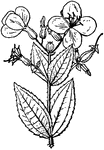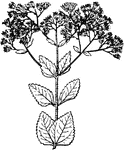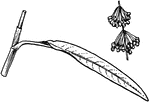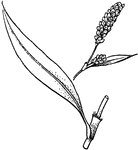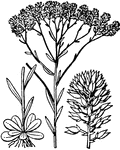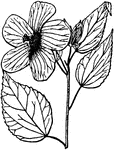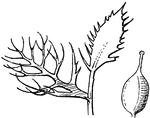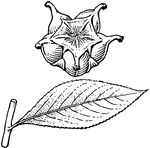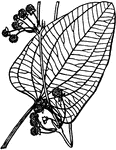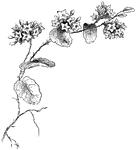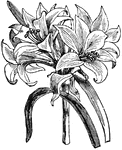
Belladonna Lily
"Of genus Amaryllis- A genus of bulbous plants, natural order amaryllidacæ, with large, bright…
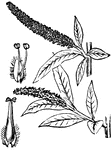
Willow
"Ament-A kind of inflorescence consisting of unisexual apetalous flowers growing in the axils of scales…
Mudfish
"Ament-A kind of inflorescence consisting of unisexual apetalous flowers growing in the axils of scales…
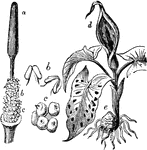
Araceæ
"Cuckoo-pint, or Wake-robin (Arum maculatum). a, spadix; b, stamens or male flowers; c, ovaries; d,…
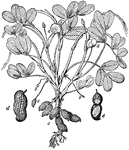
Common peanut
"Common Peanut (Arachis hypogæa). a, flowers; b, ovaries on lengthened stipes; c, forming fruit;…
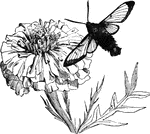
Hummingbird Moth
"A considerable number of insects belonging to Sphingina have transparents wings. Among them is the…

Arabesque Archway
"Arabesque is a style of ornamentation in which are represented men, animals (the latter consisting…

Earwigs
"The Foficulina includes the Earwig, Forficula, which appears to live principally upon vegetable…
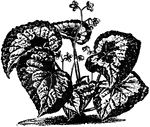
Begonia Rex
"Begonia is an extensive genus of succulent-stemmed herbaceous plants, order Begoniaceæ, with…

Chicory
Chicory is a flowering plant with blue flowers, originally from the Old World but now seen growing wild…
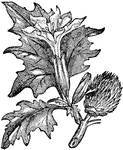
Thorn Apple
"Thorn Apple is a genus of plants. The common thorn apple is an annual plant, with smooth stem and leaves,…
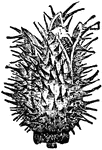
Thorn Apple Bud
"Thorn Apple is a genus of plants. The common thorn apple is an annual plant, with smooth stem and leaves,…

Double Tuberose
"Tuberose (Polianthus) is a genus of plants of the natural order Liliaceæ. The plant is in high…

Valerian
"Valerian is an order of herbs or rarely shrubs belonging to the division of monopetalous dicotyledons…

Vanilla Planifolia
"Vanilla is a genus of epiphytal Orchideæ, natives of tropical America and Asia. They are distinguished…

Viper's Bugloss
"Viper's Bugloss is a genus of plants. The species are large herbaceous plants or shrubs, rough with…

White Water Lily
"The Water Lily is an exogenous aquatic plant including eight genera, and all possessing submerged root…

Wormwood
"Wormwood is the genus Artemisia. The stem is one to three feet high, grooved, and angled; the leaves…

Yucca
"Yucca is a genus of American plants, natural order Liliaceæ popularly known as Adam's needle.…

Sea-anemone
"Their tentacles, which are disposed in regular circles, and tinged with a variety of bright lively…

Mouth of the sea-anemone
"Their tentacles, which are disposed in regular circles, and tinged with a variety of bright lively…
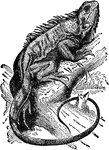
Iguana
"Iguana is a genus of saurian reptiles, natives of Brazil, Cayenne, the Bahamas, and neighboring localities…
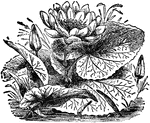
Egyptian Water Lily
"Lotus is a name given to various flowers, including several beautiful species of water lily, especially…

Myrtle
"Myrtle is a genus of plants, natural order Myrtaceæ, consisting of aromatic trees or shrubs,…

Myrtle Flower
"Myrtle is a genus of plants, natural order Myrtaceæ, consisting of aromatic trees or shrubs,…
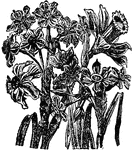
Narcissus
"Narcissus is an extensive genus of bulbous plants. The species are numerous, and from their hardiness,…

Nelumbium
"Nelumbium is the typical and only genus of the order Nelumbiaceæ. The species are remarkable…
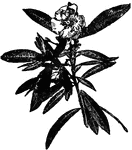
Oleander
"The Oleander is the common and sweet-scented oleander. They have lanceolate coriaceous leaves, with…

Chamaerops Humilis Palm
"Palm is a natural order of endogenous plants, the products of which are of extreme importance and utility…
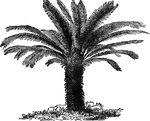
Cycas Revoluta Sago Palm
"Palm is a natural order of endogenous plants, the products of which are of extreme importance and utility…
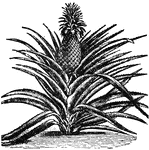
Pineapple
"Pineapple is a plant of the natural order Bromeliacæ. The flowers rise from the center of the…
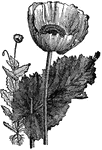
Opium Poppy
"Poppy is a genus of plants, of which there are numerous species, mostly natives of Europe and Asia,…

Quassia
"The Quassia is a tree cultivated in the West Indies and the parts adjacent. It has terminal clusters…
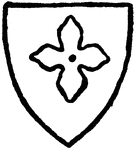
Quatrefoil
"The Quatrefoil is a piercing or panel divided by cusps or foliations into four leaves, or more correctly…
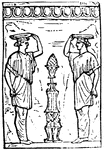
Canephoros
"A virgin who carried a flat circular basket at sacrifices, in which the chaplet of flowers, the knife…
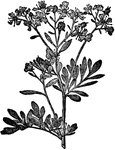
Rue
"The common rue is a half-shrubby plant, two or three feet high, of a fetid odor and an acrid taste.…

Sage
"Sage is a plant much used for flavoring meats, etc. It has blue flowers, and has run into many varieties.…



